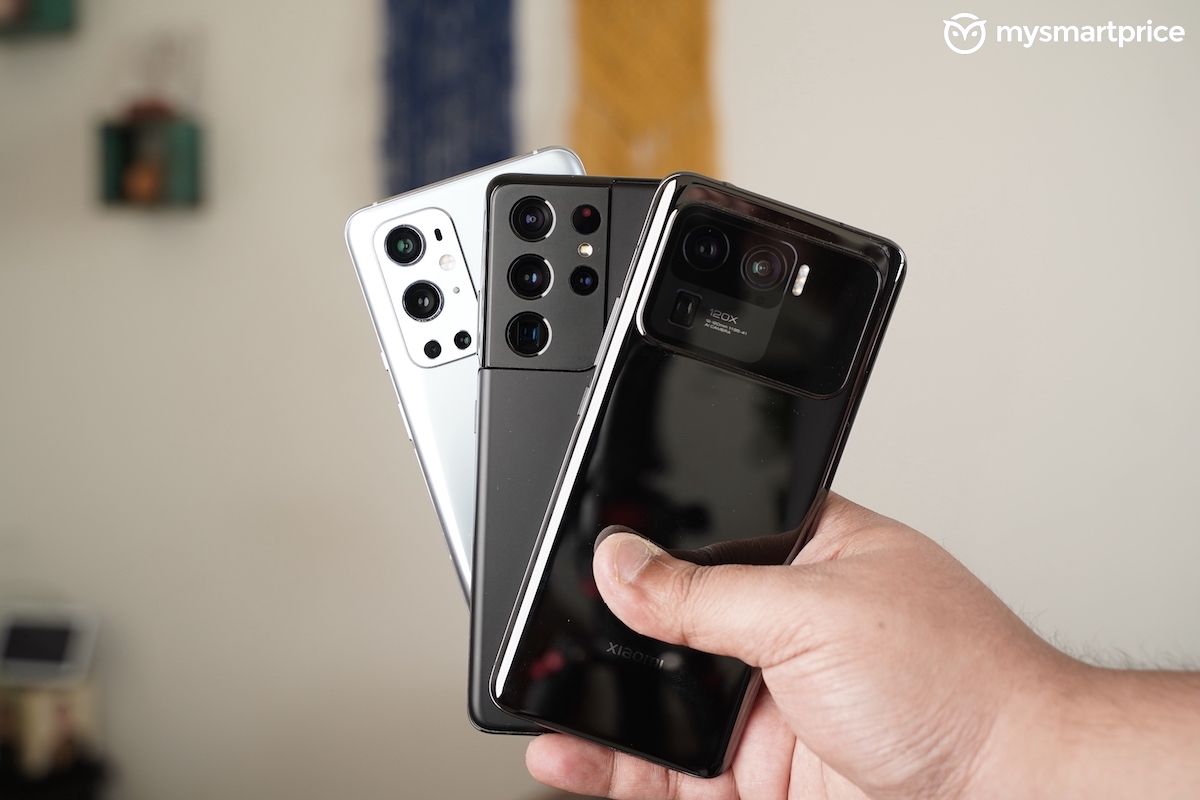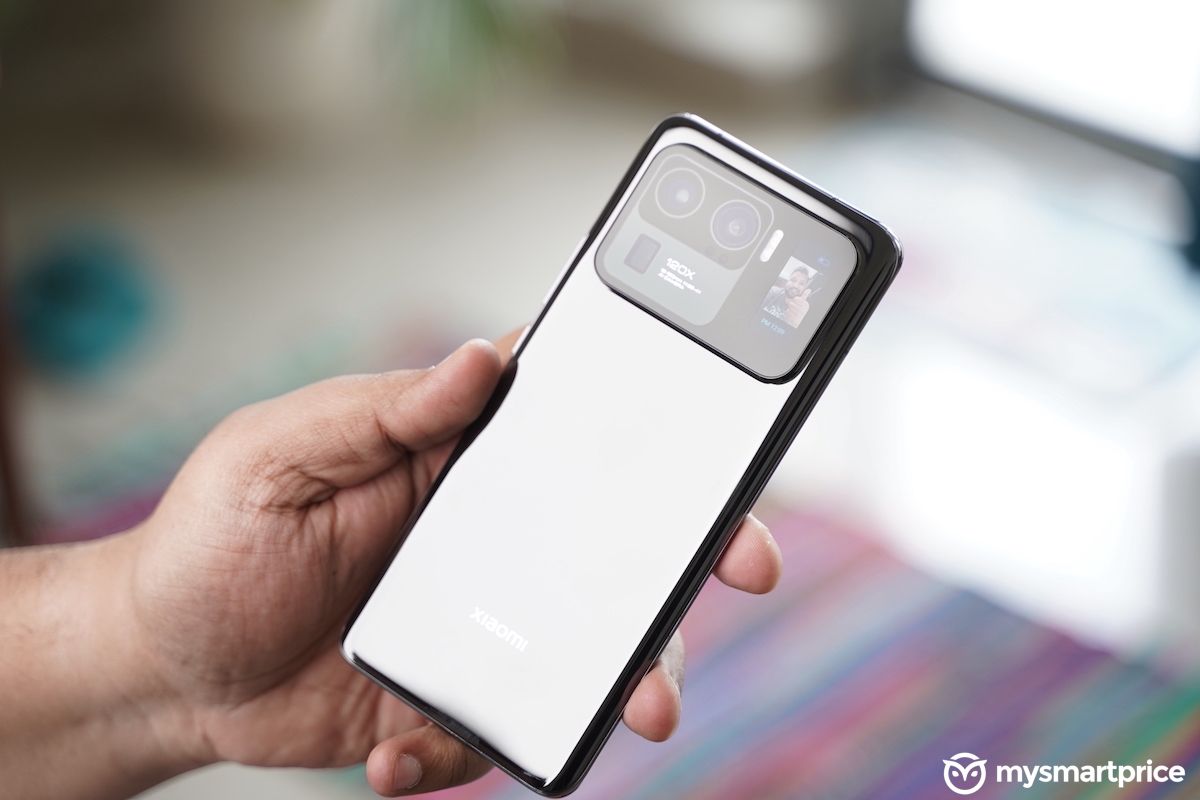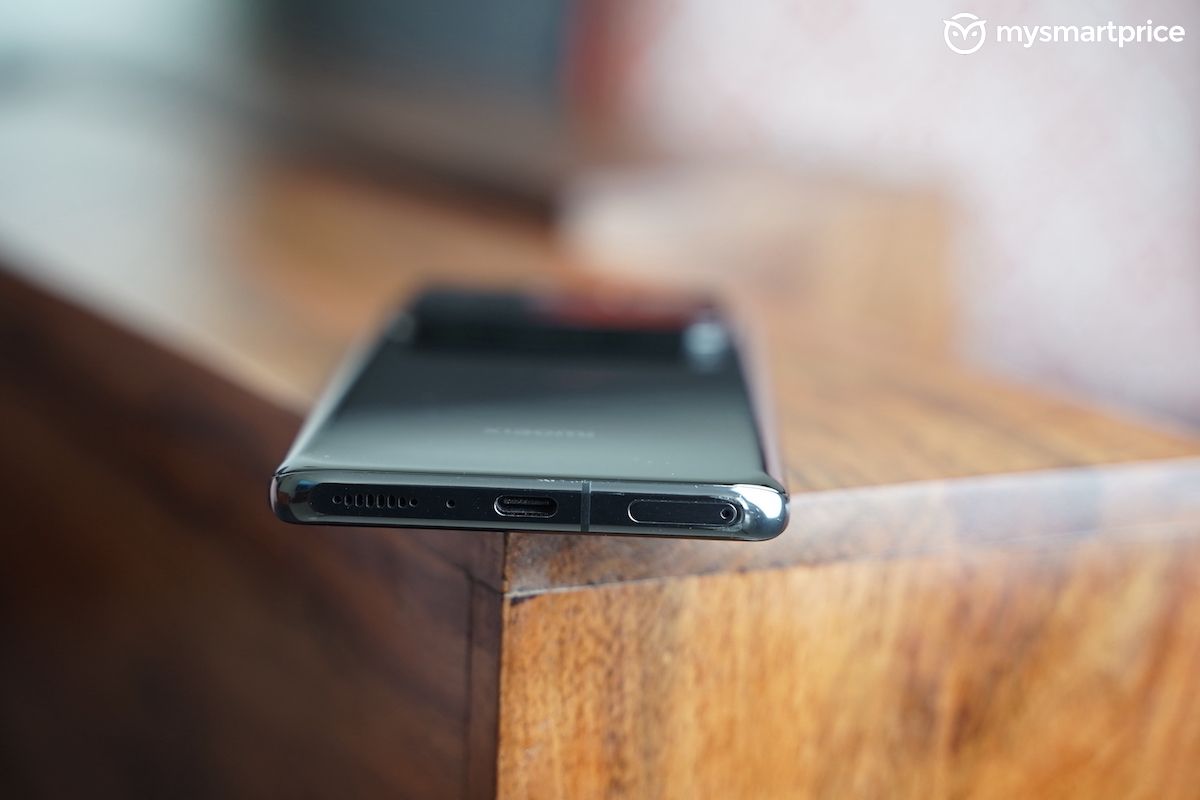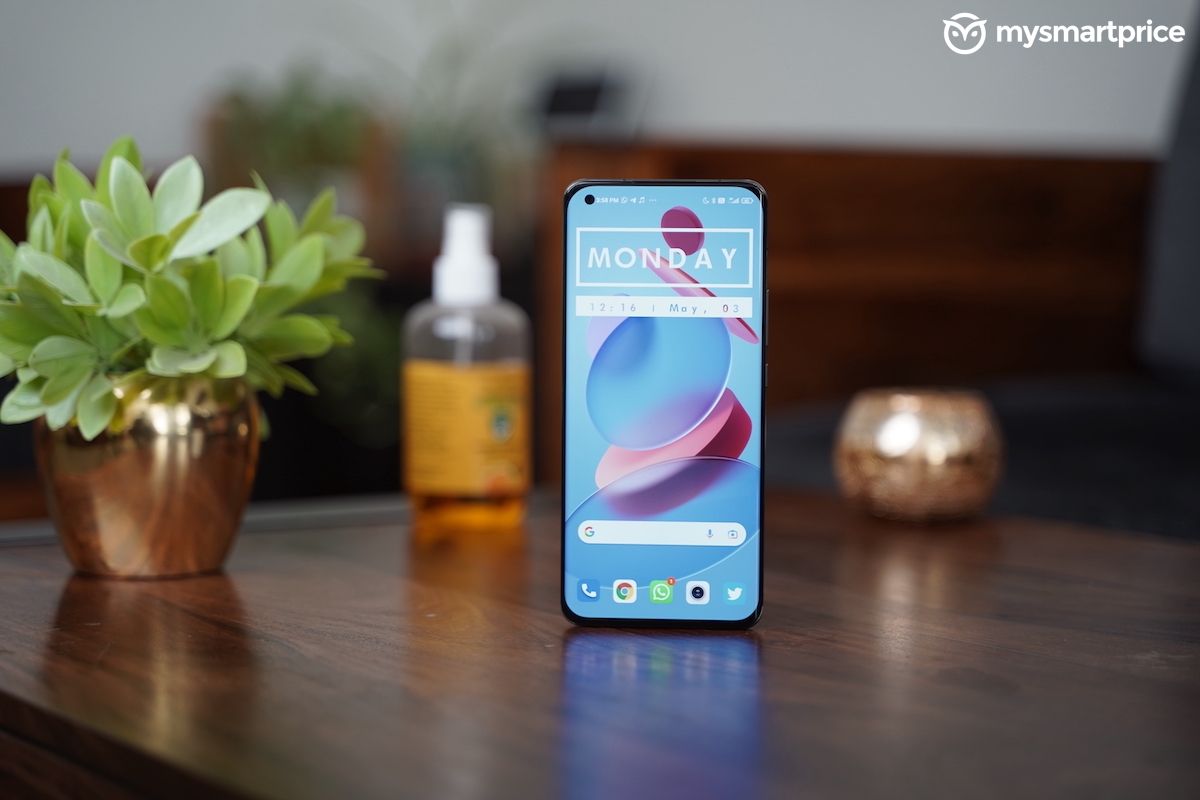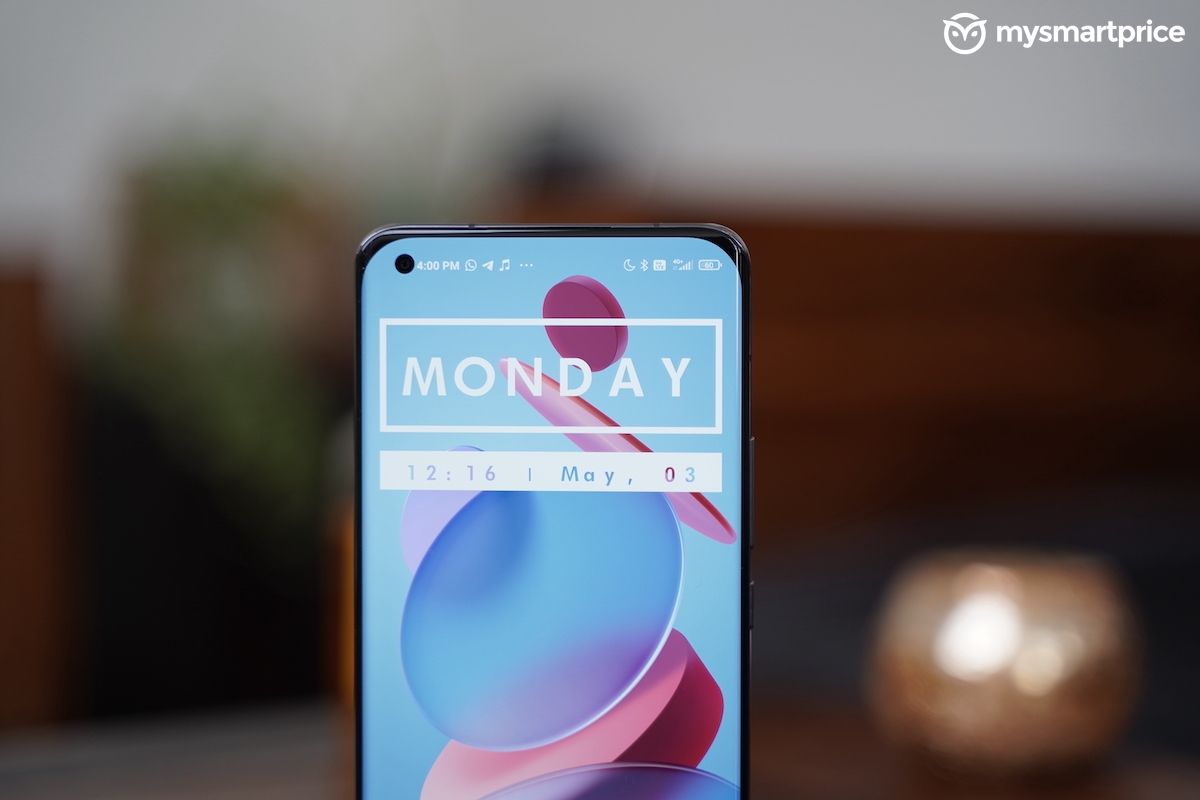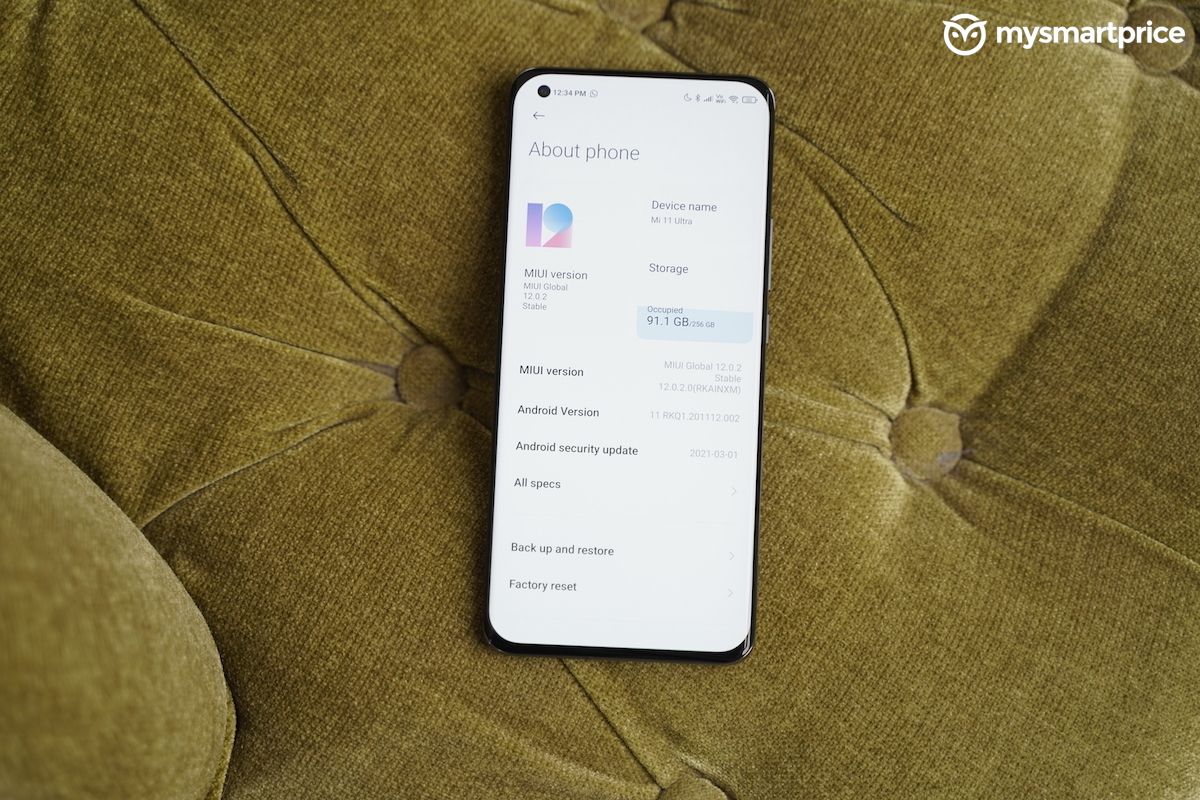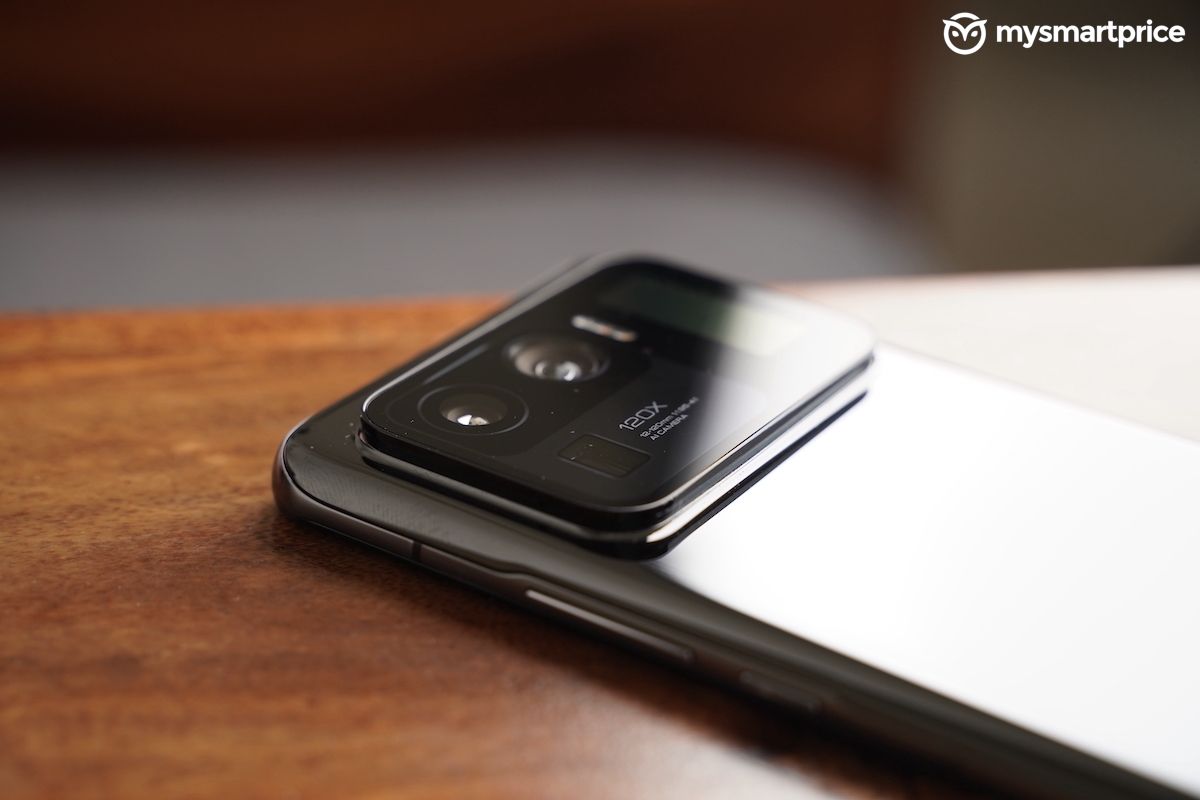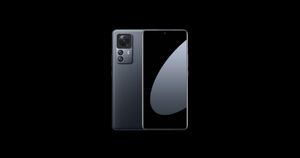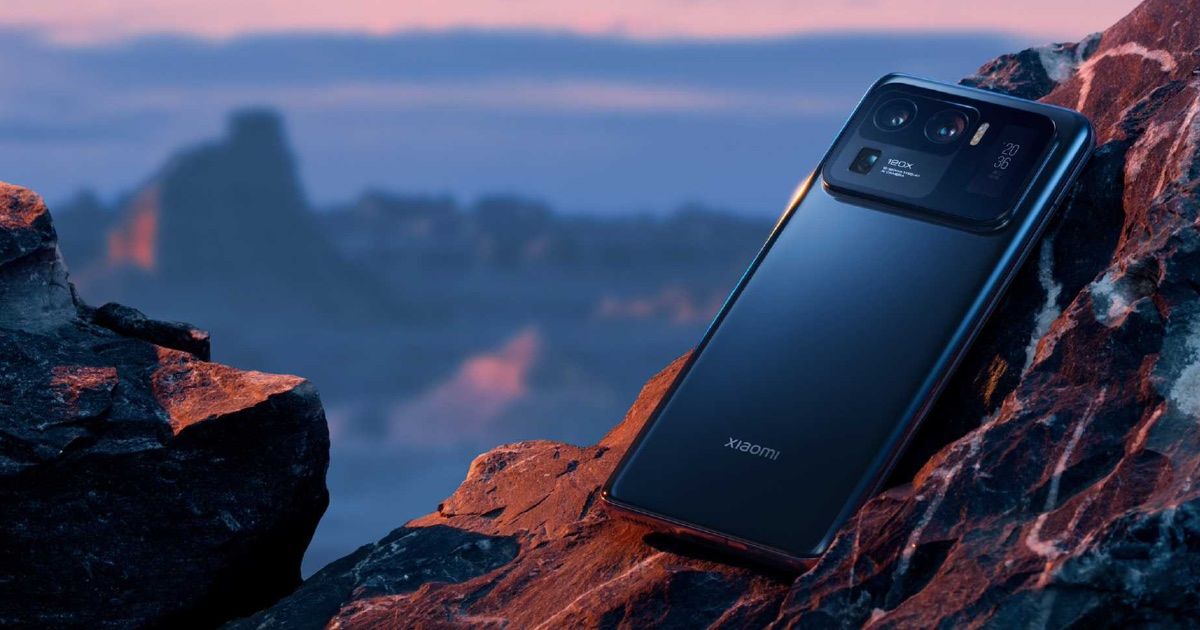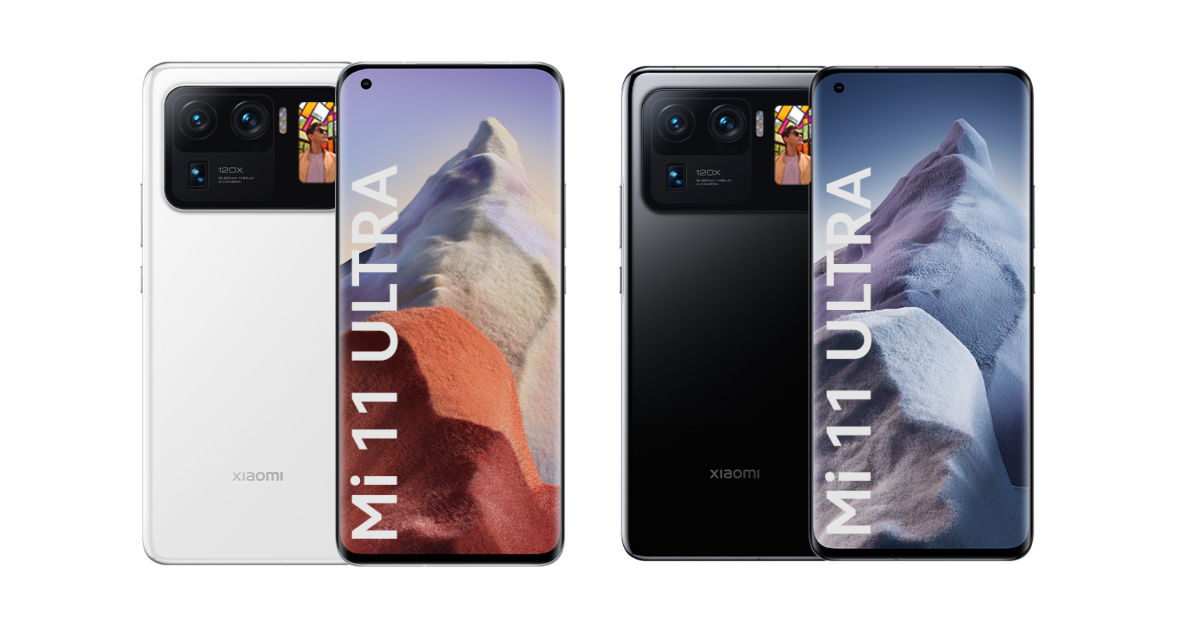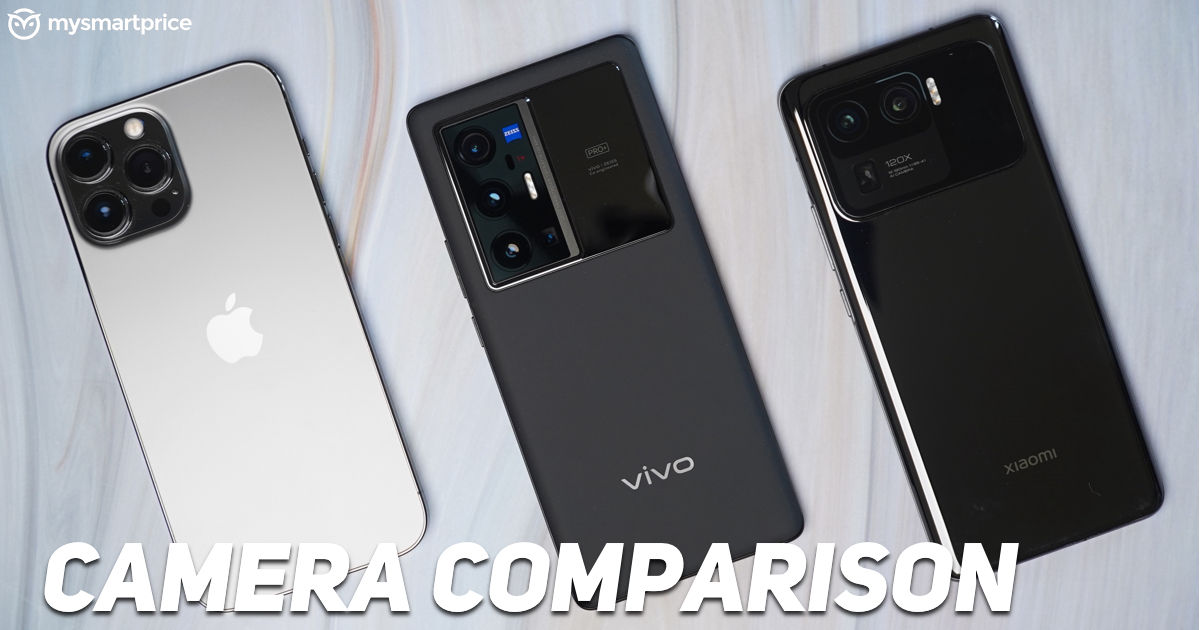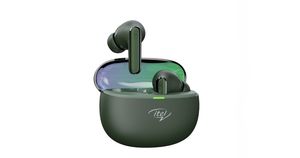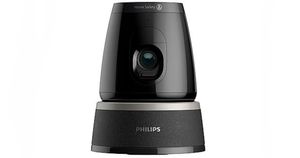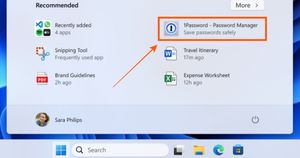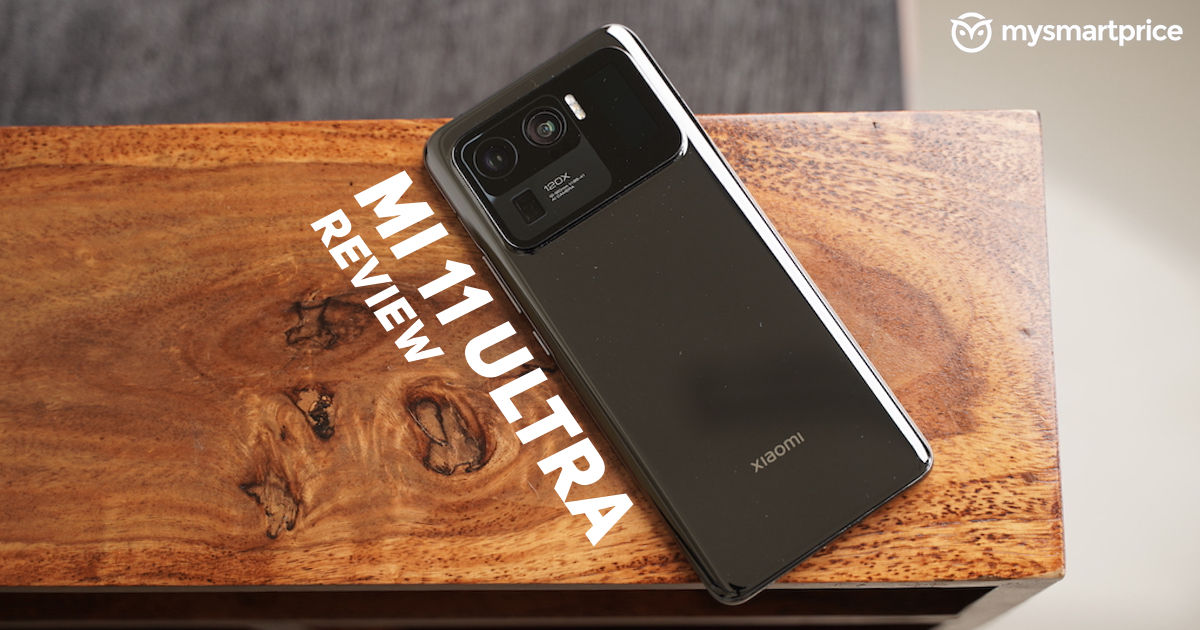
Okay, we have a winner. The Mi 11 Ultra is the best Android phone in India in 2021.
Mi 11 Ultra
Rs 69,999I firmly believe this phone is a masterstroke by Xiaomi and easily fills the void that Huawei has left behind. Allow me to explain why in this review of the phone and let’s also compare the it against the OnePlus 9 Pro and the Samsung Galaxy S21 Ultra.
Design
The Mi 11 Ultra is a chunky boy and owns its size as well. The phone looks…hmm..pretty unique, for the lack of a better word. You see, the back of the phone is dominated by that massive, massive camera bump. But, that bump packs in so much tech and a tiny display, that I am forced to forgive and forget. Now, if you discount the bump, the phone is actually only 8.4mm thick, which makes it slimmer than the S21 Ultra and the OnePlus 9 Pro. However, at 234 grams it is heavier than the S21 Ultra and the OnePlus 9 Pro. And, a lot of this weight could be attributed to the fact that it uses ceramic instead of glass on the rear.
I am sure you are wondering, how are the ergonomics? Thankfully, despite all the girth up top, it doesn’t feel outrightly top heavy or anything. That said, the S21 Ultra does feel like a more well-balanced design and so does the OnePlus 9 Pro, but then again, it doesn’t pack in so much either.
Now, between the White and the Black colour variants of the phone, I genuinely prefer the White one. It isn’t as much of a fingerprint magnet and is not as reflective either. The Black Mi 11 Ultra is so reflective that, just on this variant, Xiaomi could’ve removed the rear display because I could frame myself by looking at my clean reflection on the mirror-like back of the phone. Plus, it is super slippery too.
As for the rest of the design, you get an extremely nice and tactile set of: power button and volume rocker. Plus there are dual speakers tuned by Harman Kardon, which Xiaomi has proudly etched on the top edge. Also, on the top is Xiaomi’s now stable Infrared scanner. As usual, you do not get a headphone jack but Xiaomi does bundle a Type-C to 3.5mm jack in the box. That said, it is a major letdown that the Mi 11 Ultra has only a Type-C 2.0 port. It should have been a 3.0 port at least, because you get 10 times faster transfer speeds.
So yeah, the design of the Mi 11 Ultra is whimsical but cohesive and feels extremely premium. Having said that, Samsung has nailed the design language this year with its absolutely gorgeous frosted matte glass finish. And, the OnePlus 9 Pro is pretty derivative of last year’s OnePlus 8 Pro and doesn’t do anything different. Anyway, just know this, nothing, absolutely nothing, will prepare you for the heftiness of the Mi 11 Ultra. But, you can’t really complain considering all that Xiaomi has packed in the so-called “Superphone.”
Display and Audio
The Mi 11 Ultra has one of the best displays on a smartphone out there. The 6.81-inch display gets supremely bright and the peak brightness of 1700 nits in HDR is the best in the industry. That’s not it, it can also go up to 900 nits in regular usage. And, the moment you take the phone out of the box, the curved panel is going to totally stun you. It looks as impressive as the S21 Ultra and OnePlus 9 Pro’s already impressive displays, if not better.
That said, I am slightly disappointed by the stretched out bezels around the four corners. The high degree of curvature looks extremely odd and is bound to irritate anyone looking for design consistency. Furthermore, while you do get a very high 120Hz refresh rate coupled with a very high touch response rate of 480Hz, it is not an LTPO panel. Which means, unlike the S21 Ultra and the OnePlus 9 Pro, the Mi 11 Ultra cannot cycle between different refresh rates from as low as 1Hz up to 120Hz. This also means that you don’t get the battery life advantage that you get on the S21 Ultra or the OnePlus 9 Pro. On a positive note, I do like the fact that MIUI has the option to define the size of the area around the edges to prevent accidental touches. It does come in handy.
Also read: OnePlus 9 Pro Review – My Favourite Android Phone of 2021 Yet
Now, when Xiaomi introduced the Mi 11 Ultra, the support for Dolby Vision made me jump with joy. Although, I didn’t see the Dolby Vision stamp on Netflix like you do on the iPhone 12 series. What did work was a couple of Dolby Vision demo videos I’d downloaded. And, they looked absolutely fantastic. However, I did contact Xiaomi about the Netflix support, and I got an official confirmation from Xiaomi that the company is working with Netflix to bring Dolby Vision support on the phone soon.
Also, fret not, HDR video playback in general is gorgeous on this panel with its 1 billion colours support as opposed to 16 million on most phones. There is no banding and the tonal range is just gorgeous. It is the best Android phone display for watching any Netflix, Prime and other streaming services. Yes, even better than the S21 Ultra and the OnePlus 9 Pro.
The haptic feedback on the phone is good too but the S21 Ultra continues to lead the pack of Android Phones with extremely tight haptics. The optical in-display fingerprint scanner is fast enough but not as fast as the optical one on the OnePlus 9 Pro or the ultrasonic one on the S21 Ultra. By the way, the Mi 11 Ultra has the same awesome Corning Gorilla Glass Victus protection as the S21 Ultra. It easily keeps scratches at bay and can survive drops too.
Oh, let’s not forget that tiny 1.1-inch AMOLED panel on the rear. It can be used to capture pictures only in the photo mode and to showcase date, time, notifications, or a message of your choice that can be configured easily.
Now, rounding out the multimedia experience is the Harman Kardon stereo setup and…oh my god! It is the best speaker on any phone I’ve ever tested in my lifetime. It sounds almost as good as a mini Bluetooth speaker but with stereo separation. Yes, it can get supremely loud but that’s not the point. It sounds full, tight, spacious, and most importantly doesn’t rattle the chassis.
Also read: Samsung Galaxy S21 Ultra Review – Exynosdinary!
Plus, the audio quality through a pair of earphones is great too with support for Hi-Res audio. The Mi 11 Ultra is truly a multimedia beast. I kid you not, despite enjoying the massive 75-inch Xiaomi TV review unit at home, I watched a few episodes of Life in Colour on Netflix on this tiny phone screen instead.
Camera
By now, we all know that the Mi 11 Ultra has the biggest sensor on a camera yet. I won’t go into the camera specs. You can check the comparison page for the details. But, what I will tell you is the Mi 11 Ultra has way more features and modes in the camera.
The 9 Pro and the Mi 11 Ultra share the Tilt Shift mode, but the Mi 11 Ultra has a VLOG mode, Movie Effects, Long Exposure, Multicam and more. There’s just a lot on offer here.
Anyway, let’s move to the camera comparison between the Mi 11 Ultra and the OnePlus 9 Pro. For those wondering – but Ershad, where is the S21 Ultra? We already have a video, go check it out. In that video, I’d mentioned I will check the skin tone optimisation in the Indian unit of the Mi 11 Ultra against the S21 Ultra, so I’ve done that. But, for the camera section of this review, I’d suggest you watch the camera part of my video review because you’ll also be able to see the differences clearly.
So, as for the camera performance, I prefer the Mi 11 Ultra over the OnePlus 9 Pro for sure. But, compared to the Galaxy S21 Ultra, the Samsung phone is definitely more consistent when it comes to shooting pictures. And, that could sway a lot of folks. But, like I mentioned in my comparison of the Mi 11 Ultra with the S21 Ultra, I am a sucker for sharpness in my pictures, so I’d pick the Mi 11 Ultra over the S21 Ultra.
Performance
The Mi 11 Ultra packing Qualcomm’s latest Snapdragon 888 SoC, 12GB of LPDDR5 RAM, and 256GB of UFS 3.1 internal storage is also one of the most powerful phones we’ve tested here at MySmartPrice. I mean, the numbers speak for themselves. It scores the highest on AnTuTu among the premium phones we’ve tested till now. The Geekbench numbers are fantastic too. But, what’s more important is that the Mi 11 Ultra doesn’t throttle as much as the OnePlus 9 Pro or the S21 Ultra.
Although, that does mean that the Mi 11 Ultra does tend to get hot around the mid-frame if you push the phone for performance. Surprisingly, it also cools down much faster. I did notice the phone get hot after about a 30 minute session of Genshin Impact at 60fps. But, that’s common on most Snapdragon 888 phones now. That said, it didn’t break a sweat in Call of Duty Mobile.
Software
For all the mad hardware inside the phone, the Mi 11 Ultra runs MIUI 12 on top of Android 11 out of the box. This is the most responsive, I’ve ever seen MIUI on a phone. It is snappy, smooth, and the animations just fly. Evidently, the MIUI is a different beast on a flagship phone. Plus, you also get the same great MIUI 12 features such as Floating Windows, Second Space, Super Wallpapers, and Glance for Mi notifications. Okay, the last one is not a fun addition. I am not a fan of Glance’s lockscreen wallpapers and ads.
Also, Xiaomi doesn’t cut down on any first-party apps here. You still get the pesky GetApps store, apart from the Google Play Store, which keeps sending notifications. And, a few third-party apps such as Amazon. Prime Video, Facebook, and LinkedIn pre-installed. Thankfully, these can be deleted. By the way, the default phone and messaging apps are the Google Dialler app and the Google Messaging app.
In comparison to OneUI or OxygenOS, MIUI 12 doesn’t feel as polished or premium. I still prefer those two operating systems for their more sophisticated UI/UX approach. I would have loved to use Mi 11 Ultra running Oxygen OS or OneUI. Although, I can see myself making peace with MIUI 12, if it is this responsive and smooth.
Battery
Regarding the battery and the charging situation on the Mi 11 Ultra, let’s get the obvious caveat out of the way – the nerfed 55W charger bundled inside the phone takes an hour and four minutes to charge from 0 to 100. The 67W charger wired charger is coming to India soon but it will be a separate purchase. And about the 67W wireless charger, Xiaomi India is currently evaluating whether it should bring it to India or not. Maybe, Xiaomi did this to cut costs in some form and that’s okay, if you ask me. It is still faster than the 25W solution you get with the S21 Ultra. But yes, the OnePlus 9 Pro’s 65W charger in-box has an edge here.
As for the battery life, I tested the phone in QHD+ resolution with 120Hz refresh rate, Always On display on, rear mini display on, and I got about 5 hours of screen on time, which is great. But yes, like Marques Brownlee said, the battery does die quickly when you are continuously capturing pictures. And, the standby drain is pretty high too. In comparison, after the updates the OnePlus 9 Pro has better battery life now and the Galaxy S21 Ultra has always been good from the start.
Network
As for wireless network performance, the Mi 11 Ultra has all the bells and whistles you’ve come to expect from a modern day premium flagship. You get support from many 5G bands and 4G carrier aggregation. The audio quality through the earpiece is fantastic. There’s support for Wi-Fi 6e and Bluetooth 5.2 as well. You couldn’t ask for anything more.
Should You Buy the Mi 11 Ultra?
By price matching the Mi 11 Ultra to the OnePlus 9 Pro at Rs 69,990, Xiaomi India has clearly issued a clarion call for a smartphone war. And, honestly, the OnePlus 9 Pro doesn’t stand a chance here. I am not going to mince any words here. The Mi 11 Ultra is better than the OnePlus 9 Pro in almost every imaginable way. Yes, the 9 Pro has a cleaner software but the Mi 11 Ultra is just one step ahead in most of the hardware aspects. And, you can live with MIUI 12 if you put your mind to it. Also, it doesn’t hurt that it is supremely well optimised.
As for the Samsung Galaxy S21 Ultra, which is far more expensive in comparison, it still does have a few points going for it. Features such as Dex and Samsung Pay are unique to the Samsung ecosystem. Plus, the camera takes better pictures of humans and better telephoto shots too. Also, the design is simply more refined. All that said, by virtue of its lower pricing, the Mi 11 Ultra manages to edge ahead, if you ask me. Because it offers better performance, better low light shots, and video recording as well. There are perks here that cannot be overlooked.
So yeah, I think I have no hesitation in calling the Mi 11 Ultra the best Android phone of 2021 in India and it is my primary phone. What do you guys think? Do you have any opposing views. Let me know in the comments below.
